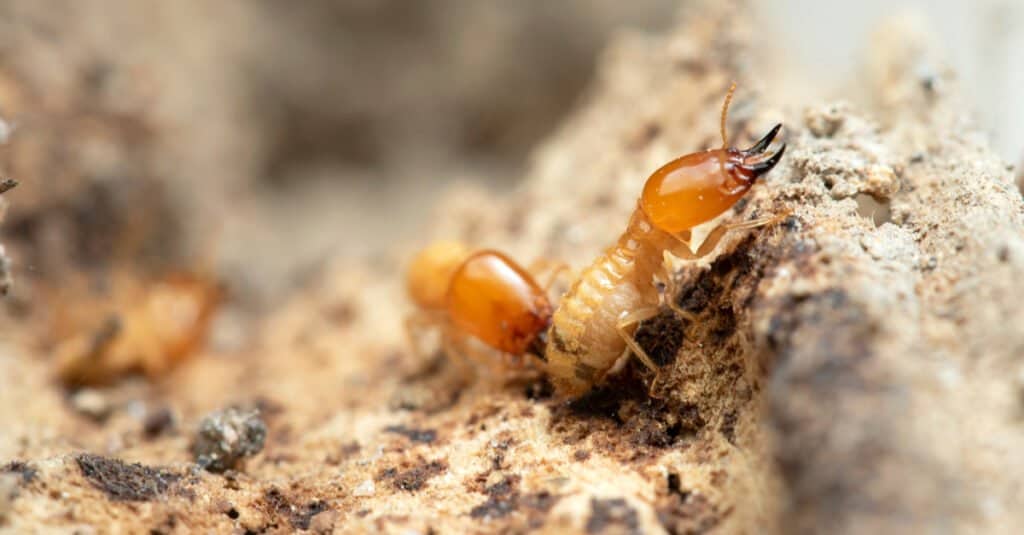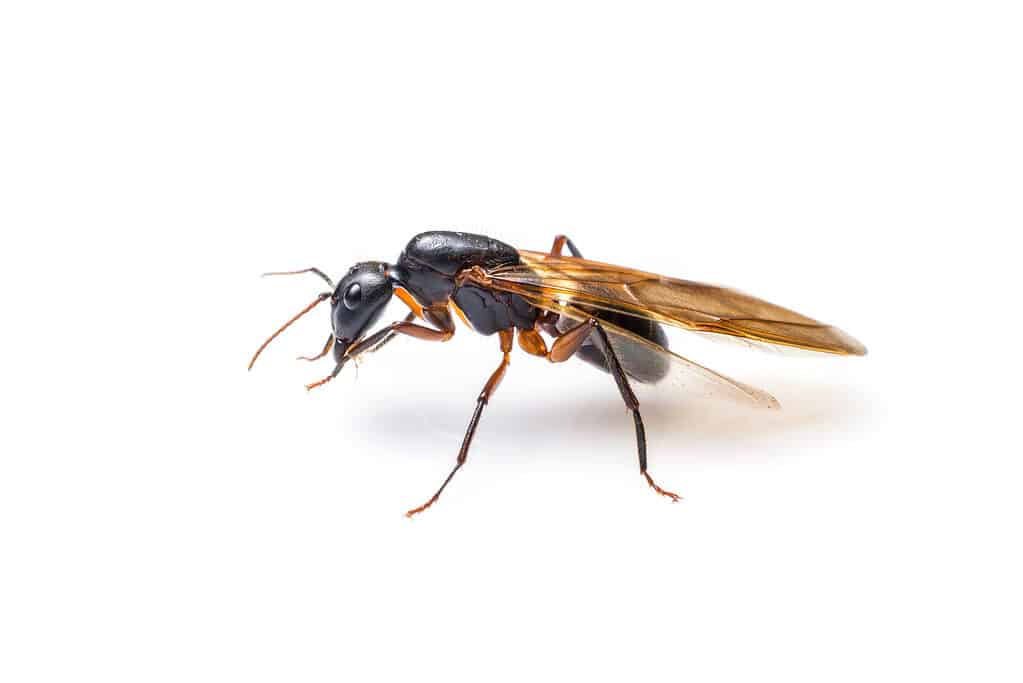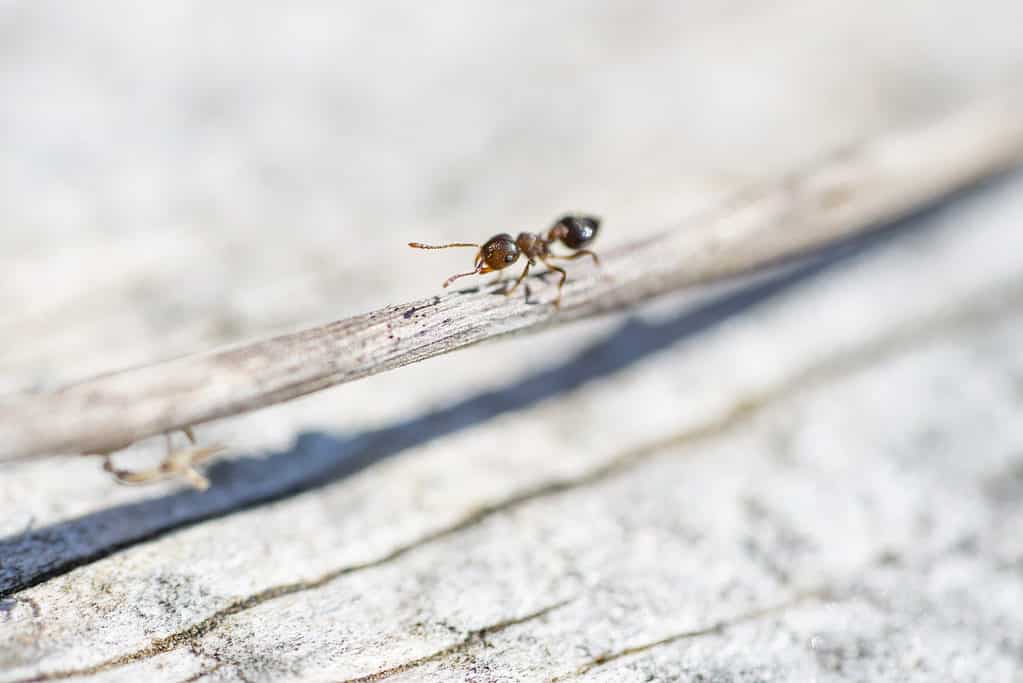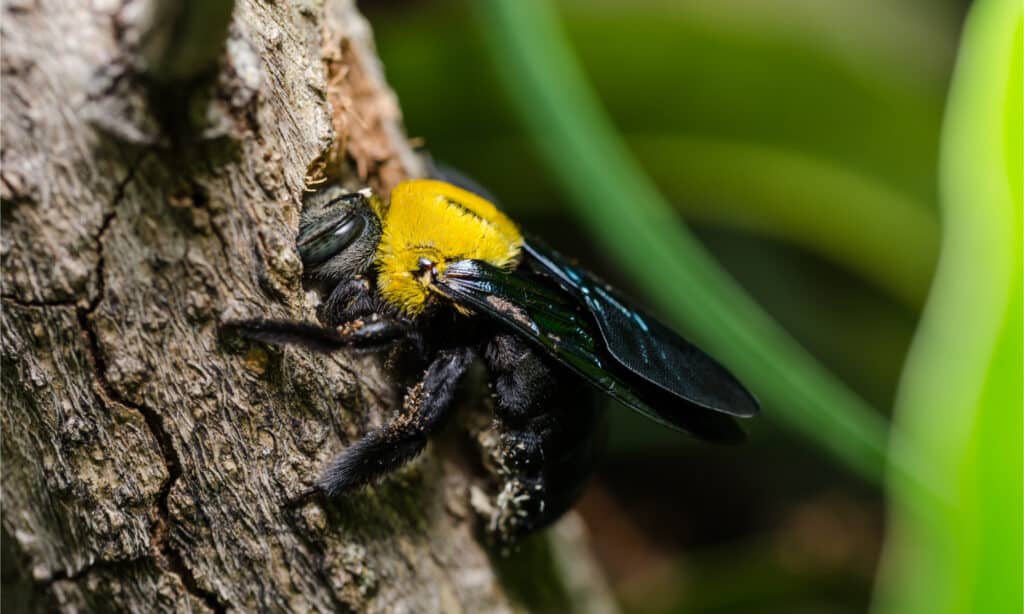People have a variety of reactions to bugs. Some individuals are fascinated by bugs and even keep them as pets. Others, though, are disgusted or afraid of them. Not that we blame them, but some bugs truly look terrifying, especially if you look closely at their body parts — their multiple legs, wings, antennae, abdomens, and mouthpieces.
Termites are interesting tiny creatures. Did you know there are about 3,000 termite species, and they can only grow from 0.1 to 0.59 inches long? Despite that, other common bugs are often mistaken for termites. Before we discuss the five common bugs that look like termites, let’s review the common termites in the United States.
What Do Termites Look Like?

There are about 3,000 termite species.
©bamgraphy/Shutterstock.com
| Color | Light tan, cream, dark brown, or black |
| Segments | 3 segments: thorax and abdomen look like a single segment |
| Nests | Network of mud-like tunnels |
| Diet | Detritivores |
| Colony size | 60,000-1 million |
Describing the exact appearance of termites is complicated because the word termite is a collective term that refers to the Isoptera infraorder. The termite order is divided into families, and each family is divided into different genera and species. The most common termite species in the United States is the eastern subterranean termite (Reticulitermes flavipes). Other types of termites that are commonly known as household pests are dry wood termites and Formosan termites.
At first glance, termites look like they only have two segments. However, their bodies have three segments: head, thorax, and abdomen. But the thorax and the abdomen of termites are straight and blocky, while other bugs have thin waists.
Termite colonies have three castes: the soldiers, workers, and the reproductives, which include a queen and a king.
5 Common Bugs That Look Like Termites
1. Carpenter Ants (Camponotus)

Carpenter ants
refer to all the species in the
Camponotusgenus.
©Waffa/Shutterstock.com
Carpenter ants refer to all the species in the Camponotus genus. They are among the largest ants, with six legs and three body segments: a heart-shaped head and thorax that connects the neck to the slim and hairy abdomen. Their colors depend on their species, but most are black, brown, or red.
Both termites and carpenter ants have three body segments, but the thorax and abdomen of termites are straight; that’s why termites may look like they only have two segments.
Another difference between carpenter ants and termites is their diet. Termites eat wood, while carpenter ants eat sugar and most human foods. Carpenter ants usually build their nests on soft, damp wood. Both cause structural damage and produce frass.
2. Flying Ants (Camponotus)

Flying ants have two pairs of wings proportionate to their bodies.
©iStock.com/lamyai
What is the difference between flying ants vs. termites? A more effective question would be — what is the difference between flying ants and carpenter ants? Flying ants belong to a separate class within the carpenter ant colonies and are called swarmers or winged ants. They perform a vital function in the colony, which is reproduction. Termites also have a winged class that does the same purpose within the colony. Let’s compare winged ants and winged termites.
If you look at them closely, flying ants have crooked antennae, while winged termites have straight antennae. Termites have two equal-sized pairs of wings almost twice the length of their bodies. Flying ants have two pairs of wings proportionate to their bodies. However, the second pair is smaller than the first pair.
3. Acrobat Ants (Crematogaster)

Acrobat ants have heart-shaped abdomens.
©iStock.com/ErikAgar
The term “acrobat ants” refers to all the species in the Crematogaster genus. They earned their name from their behavior because they habitually raise their abdomens when disturbed. Their colors vary from black to light brown, almost yellowish, and some are multi-colored.
Both termites and acrobat ants have three body segments. However, termites have a wider thorax. Moreover, acrobat ants have a pair of spines on their thorax. Furthermore, termites have blocky abdomens, while acrobat ants have heart-shaped abdomens.
4. Carpenter Bees (Xylocopa)

The term ”carpenter bees” refers to the species in the
Xylocopagenus.
©SweetCrisis/Shutterstock.com
The term ”carpenter bees” refers to the species in the Xylocopa genus. Unlike termites and ants, carpenter bees do not live in colonies. Compared to the first three bugs that look closely similar to termites, carpenter bees and termites have obvious physical differences.
Carpenter bees have three body segments like termites, but their physique is stouter compared to termites. Carpenter bees also have large eyes and a glossy, hairless abdomen.
Carpenter bees mostly ignore humans, but they pose a threat to our wood furniture and house structures. They are sometimes mistaken for termites because female carpenter bees excavate tunnels on wood when they are about to lay eggs. If you see a carpenter bee buzzing around, it’s more likely a male bee getting territorial while waiting to mate with a female carpenter bee that’s digging around wood somewhere, preparing the location where to lay its eggs.
5. Powderpost Beetles (Lyctinae)

Powderpost beetles have three body segments.
©Protasov AN/Shutterstock.com
Around 70 powderpost beetles in the Lyctinae subfamily have different appearances, behavior, and size. Like termites, they can seriously damage any dry wood furniture or house structures. They create tiny round holes on unfinished wood surfaces.
Powderpost beetles have three body segments, and you can identify them by their long flattened abdomens. Some species have slightly bent antennae facing the opposite direction, while others may look like they do not have any because their antennas are very short.
The powderpost beetle group comprises seventy species, some of which are the following:
- Lyctid powderpost beetles — attack unfinished hardwood products made from oak, ash, walnut, or hickory
- Bostrichid powderpost beetles — attack newly processed hardwoods
- Anobiid powderpost beetles — attack both hardwood and softwood
Up Next:
- 10 Bugs That Look Like Earwigs
- Termites in Texas: Where They Live & How to Get Rid of Them
- Termite Poop: Everything You’ve Ever Wanted to Know
- What Do Termites Eat? 10+ Foods They Feed On
The photo featured at the top of this post is © Gerry Bishop/Shutterstock.com
Sources
- U.S. Environmental Protection Agency, Available here: https://www.epa.gov/safepestcontrol/termites-how-identify-and-control-them
- University of Maryland Extension, Available here: https://extension.umd.edu/resource/termites
- Clemson University Cooperative Extension, Available here: https://hgic.clemson.edu/factsheet/acrobat-ants/
Thank you for reading! Have some feedback for us? Contact the AZ Animals editorial team.






